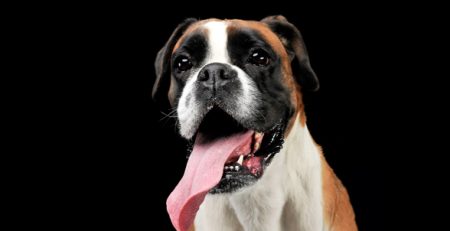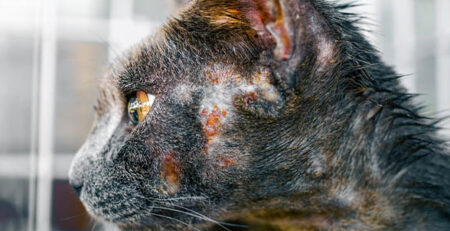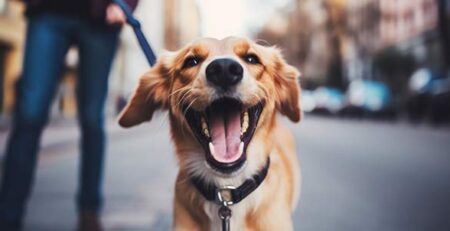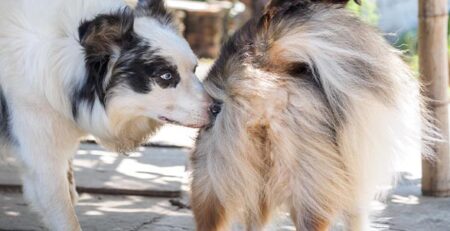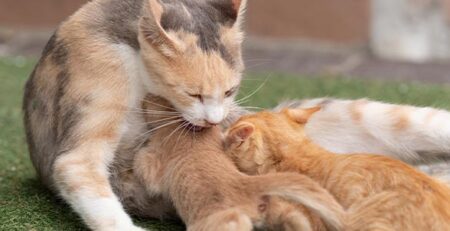Table of Contents
Dog stomach torsion: requires immediate and urgent intervention because the risk is that the dog will die from cardiovascular arrest.
Dog stomach torsion or GDV consists of an increase in the volume of the dog’s stomach associated with a rotation on itself that can range from 270° to 360°.
This is a very common and serious condition that seriously endangers the life of the four-legged animal if not immediately rescued: death of the dog can occur from cardiovascular arrest.
What happens to a dog’s internal organs with an ongoing stomach twist
Gastric torsion closes the inlet and outlet routes (pylorus and cardia) of the stomach, which will begin to dilate, causing simultaneous occlusion of blood vessels and decreased blood supply.
Occlusion of gastric arteries and veins results in edema and hemorrhage; perforation and peritonitis may also occur.
Another consequence could also be a concomitant torsion of the spleen.
Saving dog with gastric torsion is a race against time: his life depends on the time between the onset of the first symptoms and the decompression of the stomach.
Dog breeds at risk for stomach torsion
Large and giant breeds, 25 kg and above, and deep-chested breeds are at risk:
– Great Dane
– Weimaraner
– Bracco
– St. Bernard
– German Shepherd
– Dobermann
– Course
Among medium-sized dogs, the highest incidence is on Shar Pei and Basset Hound.
There are also some rare cases of GDV in small dogs and cats.
Symptoms that indicate an ongoing stomach torsion
In case of gastric torsion, the most obvious symptoms are the
enormous distension of the abdomen
and attempt by dog to vomit but without emission of material.
Other clinical signs are variable depending on the dog’s body conformation and the degree of rotation and distention of the stomach:
-
- Increased salivation
- Restlessness
- Abdominal pain
- Apathy with refusal of food
- Pale gums
- Difficult breathing
- Abnormal posture
In these cases, you must RUN IMMEDIATELY to your veterinarian and have your dog undergo surgery of
gastroplex
to irreversibly anchor the stomach to the abdominal wall, preventing future torsion.
After gastroplex: the dog’s postoperative care
After surgery, the prognosis remains reserved for 48-72 hours depending on the degree of shock and the anatomical and functional impairment of the internal organs involved.
Normally, the dog should remain hospitalized for observation for at least 3 days: it is important to go to facilities with a surgical room and with inpatient boxes where the dog can be monitored continuously until its discharge.
The suffering endured by the abdominal organs and heart, the ability to recognize the symptoms immediately, and the speed of intervention are important factors conditioning recovery.
The predisposing factors and causes of dog stomach torsion
The exact trigger of gastric torsion is not known, and it is assumed to be the consequence of a number of predisposing factors.
The first factor predisposing to stomach dilation and twisting is the bad habit of feeding the dog only one meal a day and a very large one, limiting it to kibble and no wet.
Another predisposing cause is the sudden ingestion of a large amount of water, especially if drunk immediately after a meal.
Another cause is for the dog to run and jump immediately after ingesting large amounts of food and water.
Increasing age is an important risk factor: subjects older than 6 years have twice the risk of experiencing gastric torsion than dogs aged 2 to 4 years.
Possible pyloric dysfunction and poor tension of the gastrohepatic ligament, that string of fibrous connective tissue that connects the stomach to the liver, also play a role.
How to do proper prevention
Truly effective prevention is difficult to implement when the cause of a condition such as gastric torsion is unknown.
The only truly effective and definitive preventive solution in dogs highly predisposed to stomach torsion syndrome is PREVENTIVE GASTROPESSI, intervening on the healthy and potentially predisposed dog to avert the danger of torsion.
Other precautions you can take, although they do not guarantee immunity from the disease, are related to the dog’s diet:
– Divide the daily food ration into two or more meals
– Prevents the dog from exercising in the 2-3 hours after the meal
– Eliminates easily fermentable foods such as bread, pasta, rice and legumes
– Administers highly digestible foods to promote stomach emptying
– the bowl should be placed at the dog’s head height to prevent air ingestion
– Make the dog eat slowly: there are bowls on the market designed for this purpose
Remember that promptness in rescuing your dog is critical, and the Veterinary Doctors on staff at La Veterinaria Clinic are always ready to intervene.
In case of need and urgency, we are always there: the La Veterinaria Clinic is open every day, including holidays, and with First Aid service from 8 pm to 8 am.




